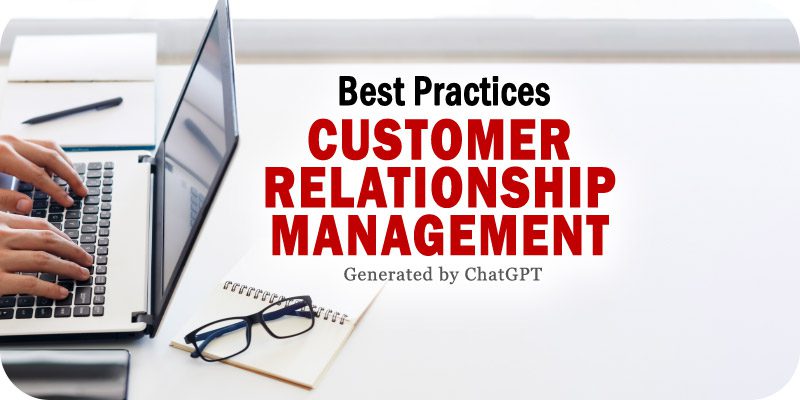8 Customer Relationship Management Best Practices Generated by ChatGPT


Solutions Review’s marketing technology editor, William Jepma, asked ChatGPT for top Customer Relationship Management (CRM) best practices. After reviewing its answers for clarity and editing them for grammar, we compiled them below. The questions we asked the AI will be highlighted in red like this.
What is Customer Relationship Management (CRM)?
Customer Relationship Management (CRM) is a strategy that organizations use to manage their interactions and relationships with customers and potential customers. It involves using technology to organize, automate, and synchronize sales, marketing, customer service, and technical support processes.
CRM aims to improve customer satisfaction, loyalty, and profitability by creating a personalized and seamless customer experience across all interactions and touchpoints. This is achieved by centralizing customer information and using it to inform business decisions and streamline customer-facing processes.
CRM systems can include various tools and technologies, including contact management, sales automation, marketing automation, customer service, analytics, and mobile and social media integration. By implementing a CRM strategy, organizations can improve their understanding of customers and their needs and use this knowledge to drive better business results.
What Are Some Top Customer Relationship Management (CRM) Software Best Practices?
1) User Adoption
Encourage and facilitate the widespread adoption of CRM software by employees across departments.
2) Integration with other systems
Integrate the CRM with other business systems, such as marketing automation, to improve data accuracy and workflows.
What business systems should you integrate with a CRM?
- Marketing Automation: Integrating with marketing automation software can streamline marketing campaigns and improve customer targeting.
- Accounting: Integrating with accounting software can provide real-time financial data and streamline billing processes.
- E-commerce: Integrating with an e-commerce platform can provide a seamless experience for customers and improve data accuracy.
- Social Media: Integrating with social media platforms can help you manage customer interactions and monitor brand reputation.
- Customer Service: Integrating with a customer service platform can improve response times and customer satisfaction.
- Analytics: Integrating with analytics tools can help you gain insights into customer behavior and make data-driven decisions.
- Data Warehousing: Integrating with a data warehousing solution can help you manage and analyze large volumes of customer data.
- Telephony: Integrating a telephony system can improve call management and provide a complete view of customer interactions.
3) Data Cleanliness
Regularly clean and maintain customer data to ensure accuracy and prevent duplicates.
What is CRM data cleanliness?
CRM data cleanliness refers to the accuracy and completeness of the customer data stored in a customer relationship management (CRM) system. It involves regularly reviewing, updating, and removing duplicates or outdated information.
4) Customization
Customize the CRM software to fit the unique needs of your business.
5) Reporting and Analytics
Use the reporting and analytics capabilities of the CRM software to gain valuable insights into customer behavior and interactions.
6) User Training and Support
Provide ongoing training and support to users to ensure maximum efficiency and productivity.
7) Mobile Access
Enable mobile access to the CRM software for employees who are frequently on the go.
8) Continuous Improvement
Continuously evaluate and improve the CRM software to ensure it remains practical and relevant to your business needs.





















